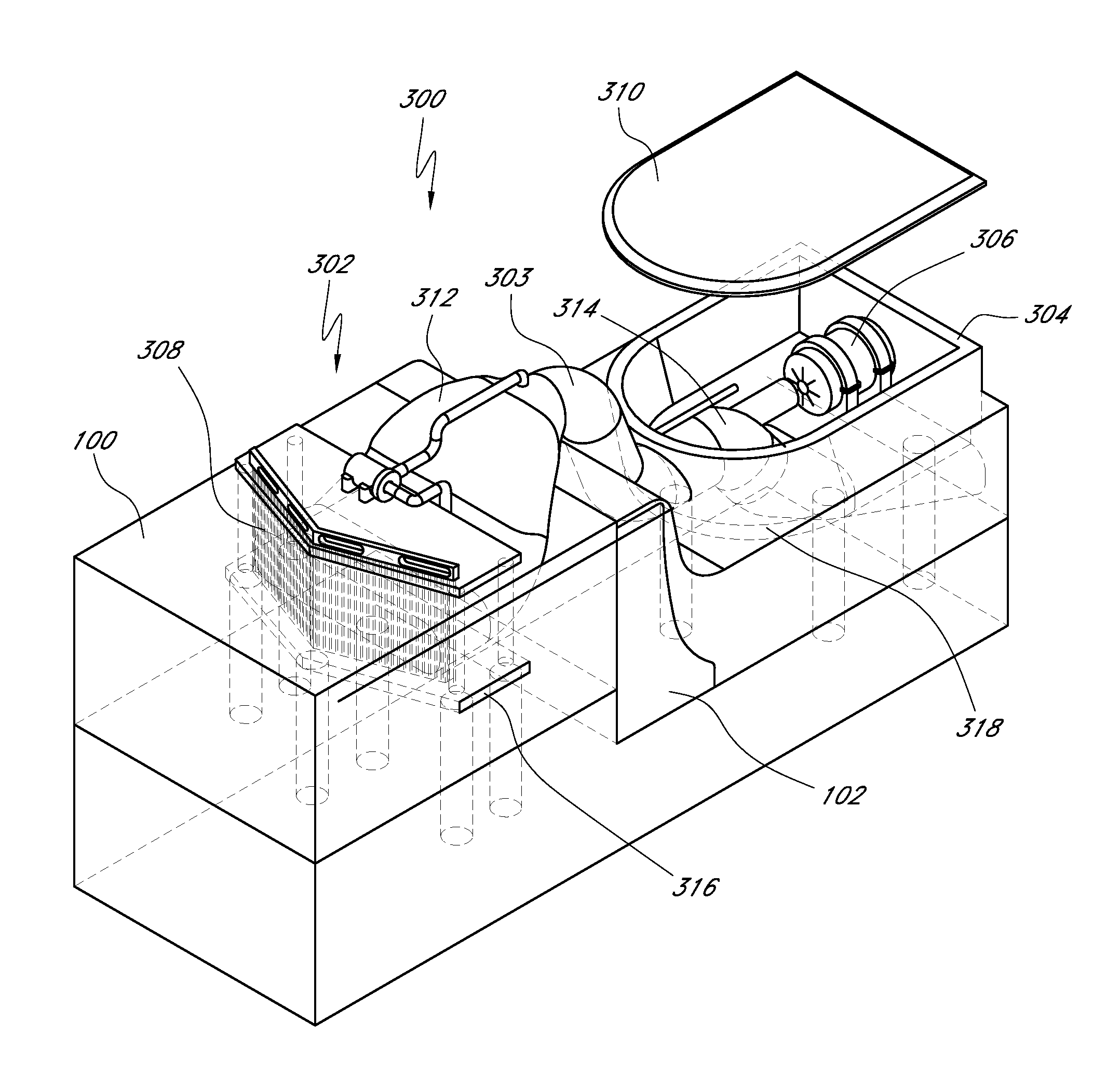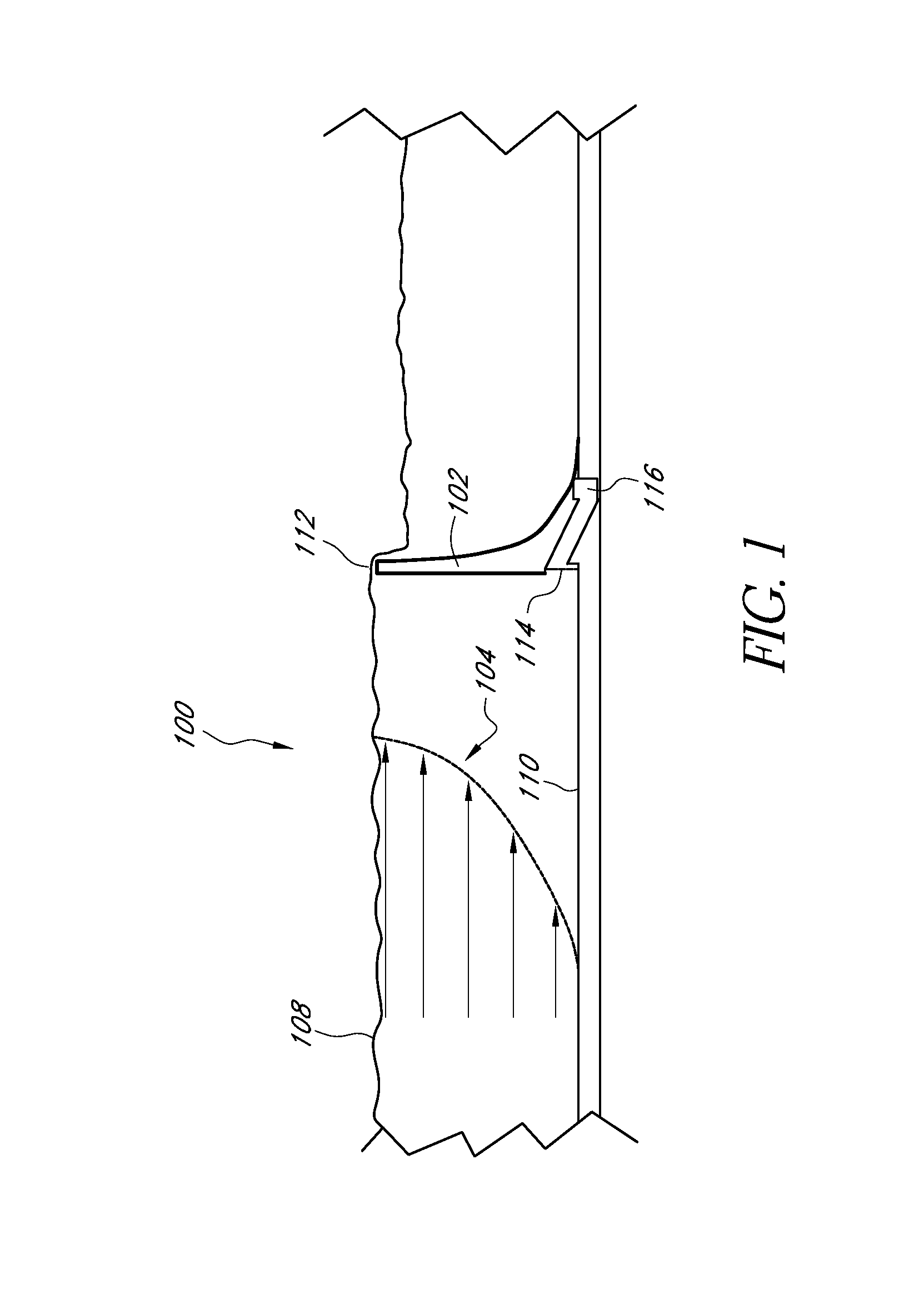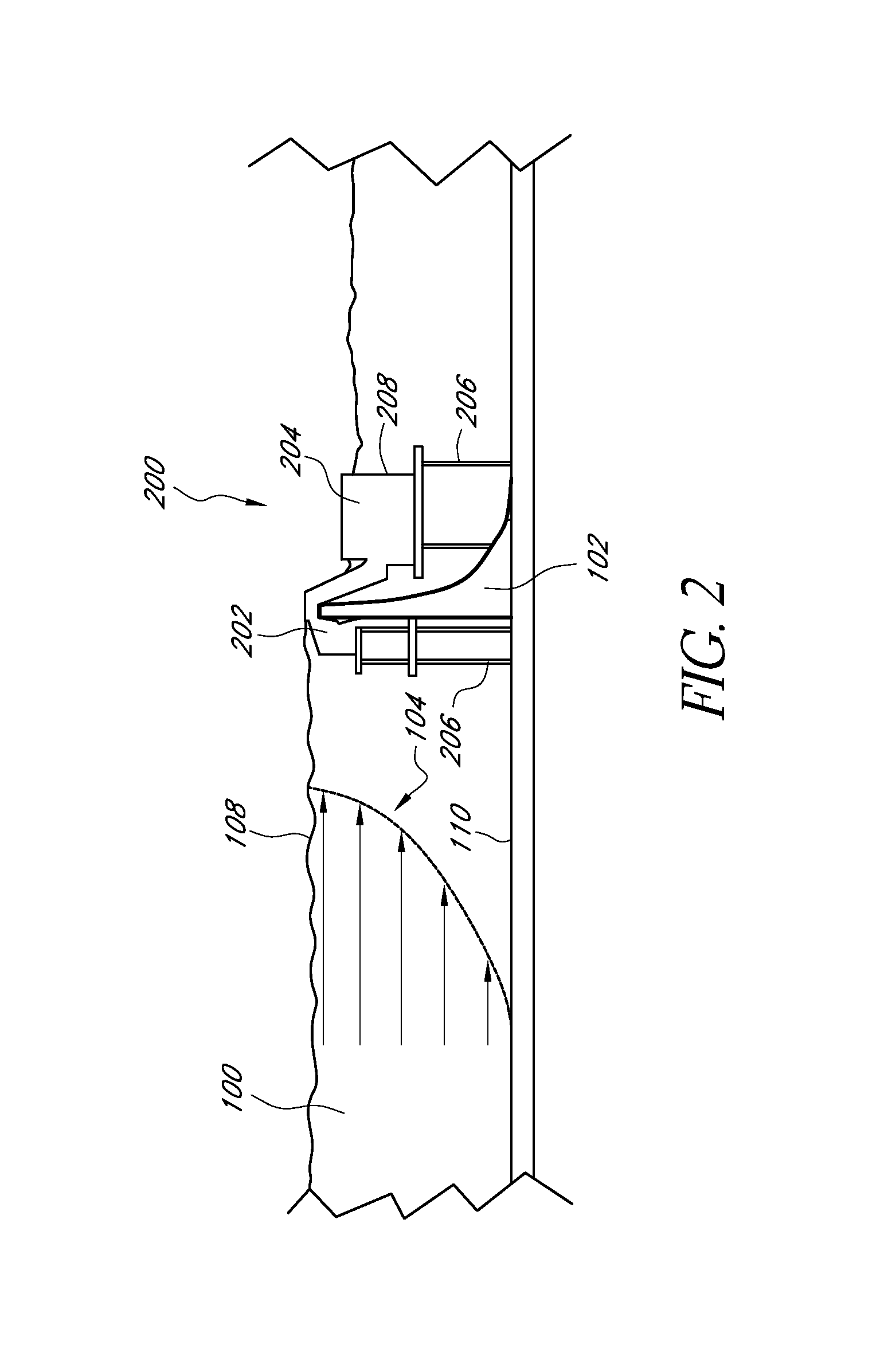Compact design of using instream river flow and/or pump discharge flow technology added to differentials between head water and turbine location
a technology of instream river flow and differentials, applied in the direction of fluid couplings, electric generator control, couplings, etc., can solve the problems of limited exploration of renewable energy sources, plants that cannot be built in large scale, waste water spilling over the thousands of existing low-head dams, etc., to improve unit performance, reduce instream pressure losses, and increase the total turbine output
- Summary
- Abstract
- Description
- Claims
- Application Information
AI Technical Summary
Benefits of technology
Problems solved by technology
Method used
Image
Examples
Embodiment Construction
,” one will understand how the features of the invention provide advantages that include, for example, a technology related to hydroelectric generation that has low environmental impact, good aesthetics, and requires low maintenance and low cost construction.
[0007]Certain preferred embodiments of the present invention provide a method of using instream river water flow velocity to increase turbine output. In one embodiment, the method comprises capturing the kinetic energy in flowing river water, preferably in water spilling over low-head dams, and using such energy in conjunction with differentials between head water and turbine location to improve turbine output. In certain implementations, the novel technology can be used to establish dispersed small-scale hydroelectric generation units at existing low-head dams. Preferably, the dispersed small-scale hydroelectric generation units can be connected to the existing power grid, thus providing a new source of sustainable alternative ...
PUM
 Login to View More
Login to View More Abstract
Description
Claims
Application Information
 Login to View More
Login to View More - R&D
- Intellectual Property
- Life Sciences
- Materials
- Tech Scout
- Unparalleled Data Quality
- Higher Quality Content
- 60% Fewer Hallucinations
Browse by: Latest US Patents, China's latest patents, Technical Efficacy Thesaurus, Application Domain, Technology Topic, Popular Technical Reports.
© 2025 PatSnap. All rights reserved.Legal|Privacy policy|Modern Slavery Act Transparency Statement|Sitemap|About US| Contact US: help@patsnap.com



